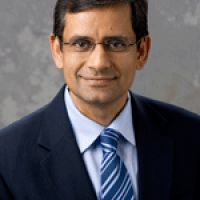Chaubey et al., 2015
Ecosystem services in Indiana agriculture: farmer and conservation perceptions
Logsdon, R.A., M.M. Kalcic1, E.M. Trybula, I. Chaubey, and J.R. Frankenberger (2015)
International Journal of Biodiversity, Science, Ecosystem Services, and Management 11 (3): 264-282
-
IML, INVESTIGATOR
Abstract
The fate of ecosystem services (ESS) in the United States depends on the actions of private landowners and operators (‘farmers’). This work uses a mixed qualitative and quantitative method to understand farmer knowledge of ESS and willingness to manage lands from an ESS perspective. Fourteen interviews were conducted to analyze farmer understanding of ESS within the context of conservation management. Two hundred surveys of Indiana farmers and 33 surveys of Indiana US Department of Agriculture Natural Resource Conservation Service conservationists (‘conservationists’) were analyzed in order to assess ESS knowledge derived from varied land types. Though most farmers and conservationists were unfamiliar with ESS, both groups consistently recognized environmental benefits from land types and conservation practices. They were also able to identify trade-offs in ESS when managing lands for maximum food production. Farmers and conservationists differed in their views of the beneficiaries and stewards of ESS, which also varied by land type. Overall, this study shows that while Indiana farmers and conservationists are aware of ESS concepts, some ESS are more easily recognized and understood than others. By understanding how farmers view and describe ESS, we can start applying the ESS concept to agricultural management in the United States.
Citation
Logsdon, R.A., M.M. Kalcic1, E.M. Trybula, I. Chaubey, and J.R. Frankenberger (2015): Ecosystem services in Indiana agriculture: farmer and conservation perceptions. International Journal of Biodiversity, Science, Ecosystem Services, and Management 11 (3): 264-282. DOI: 10.1080/21513732.2014.998711
Explore Further

